For the first few decades of making quilts, I never thought about how I stored them—which generally meant that I folded them in the middle, and then in the middle again and so on before putting them on a closet shelf or in a plastic tote.
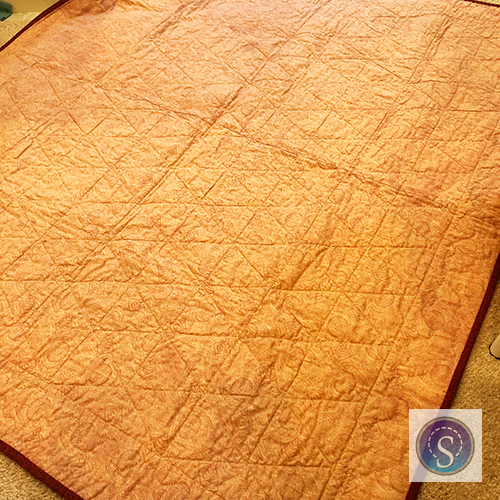
Permanent creases down the center in both directions, before I was worried about how to fold and store quilts. They’re never going away.
But once I moved into the realm of quilt professional so that I was often showing my quilts to groups, talking about them and teaching, I realized that they needed to look their best at all times. My methods of storing and folding quilts have changed.

I store my important quilts flat. The medium and large quilts lie face down on the guest bed, and the window shade is down to keep the light low. It works well until we have guests, and then it’s a big production to move them all, but it’s still the best option I have. The biggest quilts hang over the sides of the queen-size mattress but that’s still better than being folded. There are usually about 50 medium and large quilts on the guest bed and it reminds me of The Princess and the Pea.
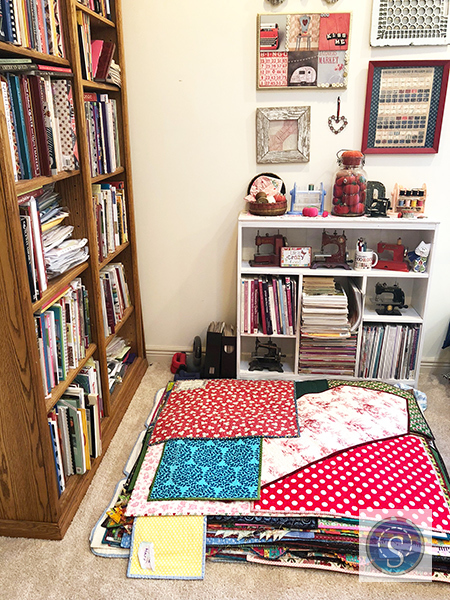
The small quilts are stored flat on the floor of my studio one on top of another. It’s not ideal but it’s better than folding them. I have learned to walk around them.

The less important quilts can be stored folded on the floor of the guest room for a while as needed. This happens between trunk shows when there isn’t time to flatten them out or if I get busy with other things.
The most important change I have made is in how I fold quilts. This applies any time they are taken off the bed, even when it’s just a few days for transport to and from a trunk show. It’s simple but it makes a difference.
Rather than folding a quilt in the middle, I do one of two things.
- I fold the quilt in thirds in both directions. Even if I end up with creases over the long haul, the creases will be less noticeable if they’re not down the center of the quilt. Or…
- I fold the quilt just off-center in both directions.
Here’s how that looks on the floor of my studio.

You can see that I’ve offset the first fold by six or seven inches.
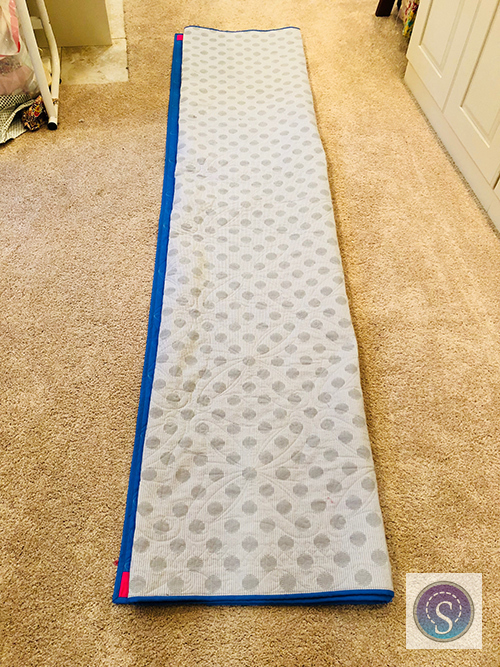
The second fold, above, can be made in the middle of the folded quilt because by offsetting the first fold, the second will automatically be offset as well.

When I fold the quilt in the opposite direction, I don’t bring the ends all the way to the top, above. Once again, I offset the fold by six or seven inches. (The amount of offset doesn’t really matter.)

For the last fold, I bring the bottom up to the top as shown above. With this method, the quilt is not folded in the middle in either direction. Even if it has to be folded for a few months (the thought makes me shudder), the resulting creases won’t be down the middle.

During a trunk show, there are usually holders and folders to help out, and whenever possible I ask them to fold the quilts in thirds instead of halves. Sometimes the quilts have to live in the car for a few days before I get home, and I don’t want creases to creep in if I can avoid it.
For a while, I tried using pool noodles and wrapping the quilts around them, but it was a laborious task with so many quilts. Most of my quilts were too large for the noodles anyway, and I still had to have a place for all those rolls. So I don’t recommend noodles if you have a lot of quilts (more than a dozen), but it is a great solution if you have only a few and they’re mostly throw-size.
Do you have a workable quilt storage system? We’d love to hear about it. Please leave a comment below. Thanks for visiting the HQ Stitch blog!


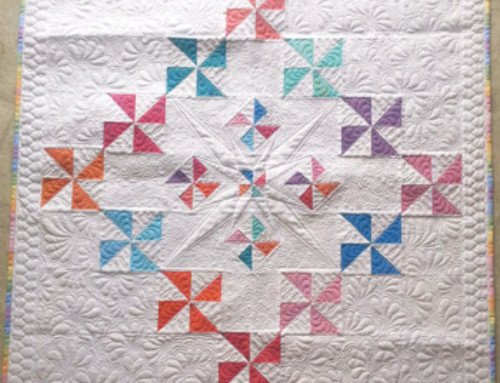
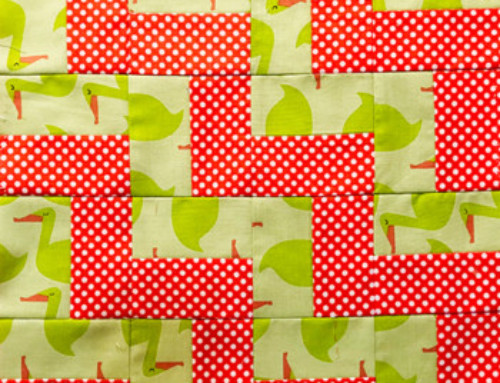
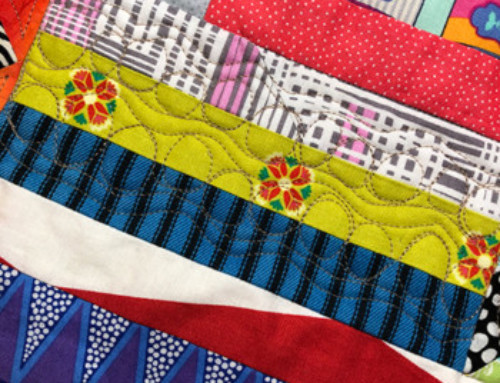

Great idea to fold off center and different…also the guest bed is a super idea also. Thanks for the tips.